Mazda CX-50 Meridian Vs Subaru Forester Wilderness: Moderate Muddin'

When a television series grips the world’s attention as it explodes in popularity; there’s bound to be spin-offs.
The same is true in the automotive world. Segments that are red hot inevitably lead to smaller, niche sub-segments. Case in point – compact SUVs. Having become the defacto choice for family vehicles, manufacturers are clamouring to get more and more of the segment’s prosperous pie.
Get a Quote on a New Subaru Forester or Mazda CX-50One strategy is to build speciality compact SUVs, like the two we’re featuring here. Designed to be more capable off-road focused models, both the 2023 Mazda CX-50 Meridian and 2023 Subaru Forester Wilderness aren’t afraid to get a bit dirty. This is good news as our test day features anything but pleasant driving conditions.
The Subaru Forester Wilderness is the more familiar of the duo, having debuted last year. It slots in about two-thirds of the way up the Forester family hierarchy and is the latest member of the go-anywhere Wilderness sub-brand. Subaru has a long history of excelling in slippery road conditions, so expanding into this market space makes perfect sense.
Utilizing much of the same philosophy, the 2023 Mazda CX-50 Meridian is all-new this year. It too slots in the upper half of the model’s line-up with a pronounced focus on loose-surface performance. The question is, can Mazda beat Subaru at its own game? We intend to find out.
Mazda CX-50 Meridian vs Subaru Forester Wilderness: Styling
Subaru Forester Wilderness: It appears there’s a specific formula to follow when making a compact off-road-focused SUV. Both vehicles feature a stain black vinyl hood graphic, dark wheels, full LED lighting, and various blacked-out trim pieces. But that’s where the similarity ends.
SEE ALSO: 2022 Subaru Forester Wilderness Review: First DriveThe Subaru Forester is the shorter vehicle of the pair, with an overall length of 182.7 inches (4,640 mm). Combine that with a height of 68.1 inches (1,750 mm) and width of 71.5 inches (1,835 mm), and it’s apparent the taller, narrower Forester is more of a traditional SUV when parked next to the CX-50. The boxy design doesn’t seem to ever change much which makes the Forester instantly recognizable, if not stale. We will say the Wilderness is the best-looking Forester currently on sale, but that isn’t overly difficult to achieve.
Mazda CX-50 Meridian: The Mazda CX-50 is one of the best-looking vehicles in the segment and the Meridian trim does nothing to take away from this. In fact, it might even enhance the vehicle’s looks. The knobby tires and blacked out bits give the CX-50 a more sinister presence.
As mentioned, at 185.8 inches (4,720 mm) in length, the Mazda is longer, but also lower to the ground (63.9-inches or 1,623 mm tall) and wider (75.6 inches or 2,053 mm). It gives the SUV a more off-road-racer look, like something ready to attack a showroom stock class at Baja.
There are some trade-offs with the sleeker styling though. It pays a penalty when it comes to sight-lines; especially around the tiny rear window.
Bottom Line: Both vehicles are instantly identifiable as off-road specialists and arguably the best-looking model in their respective lineups. But the Mazda CX-50 is the real looker of the duo with sleek, attractive styling that remains rugged.
Engine and Fuel Economy
Subaru Forester Wilderness: Like all versions of the current generation Forester, the Wilderness comes standard with a 2.5-liter four cylinder making 182 hp and 176 lb-ft of torque. It sends power to all four wheels through a continuously variable automatic transmission. The Wilderness’ automatic does get an eighth ‘manual mode’ gear – one more than other Foresters.
What more can we say about this set up that we haven’t mentioned over the past decade or so. The Subaru engine revs quickly but makes a lot of noise as it goes about its business. The CVT is smooth but not exactly quiet either. It is a perfectly usable combination, but against the competition, notably the CX-50 in this case, its wholly out matched.
Fuel economy is still in the Forester’s benefit, despite a significant decrease for the Wilderness model. With higher resistance tires, worse aerodynamics, and a taller ride height, fuel ratings are pegged at 25 mpg (9.5 L.100 km) city and 28 mpg (8.3 L/100 km) highway. That’s down from 26/33 mpg (9.0/7.2 L/100 km) for all other Forester models.
Mazda CX-50 Meridian: Unlike the Wilderness, the Meridian is not available with a naturally aspirated engine. The only choice is Mazda’s 2.5-liter turbocharged four-cylinder that makes 256 hp and 320 lb-ft of torque on premium fuel (227 hp, 310 lb-ft on regular grade). Its dance partner is a six-speed automatic that sends power to all four wheels.
This engine is obviously more responsive at any speed compared to the Subaru’s. It’s quieter in operation as well, with the vehicle effortlessly accelerating at any speed, and really pulls away once on the highway. But it’s not all roses. The power unit doesn’t quite feel like it has the power advantage the numbers would suggest. Some of this may have to do with a very green test vehicle than has less than 200 miles on the odometer.
SEE ALSO: 2023 Mazda CX-50 First Drive Review: Destination OutbackAs well, the six-speed could use a few more gears to help with fuel economy. Officially the turbocharged CX-50 is rated at 23 mpg (10.4 L/100 km) in the city and 29 mpg (8.1 L/100 km) on the highway. Combined these numbers trail the Forester. However, we have a suspicion that the actual fuel economy figures should be lower for the Meridian due to its off-road upgrades, much like the Wilderness.
Bottom Line: When it comes to the drive unit, there is no contest with the Mazda offering a more powerful set-up that is also quitter and smoother in operation. The Subaru Forester does hold a slim advantage in fuel economy ratings though.
Handling and Ride Comfort
Subaru Forester Wilderness: As part of the Wilderness treatment, the Foresters receives 225/60R17 all-terrain tires and a lifted suspension that puts total ground clearance at 9.2 inches (234 mm). With this extra ride height, body roll is more pronounced while cornering. The knobby tires produce extra road noise and a bit of road vibration is felt through the steering wheel and pedals. Road noise from the Meridian is also present, but more subdued compared to the Subaru.
The Wilderness still has the same reassuring, easy-peasy drivability of other Foresters. It may be one of the most approachable small SUVs for anyone to drive with no prior experience. In addition, the relatively low 3,620 lbs. (1,664 kg) curb weight makes it respond to driver’s inputs quickly, although a sporty handler this is not.
Leave the pavement, and the Wilderness becomes a mud-loving monster. It handles undulating bumps, offset potholes and loose surfaces better than some body-on-frame trucks. This may sound like blasphemy to an off roader, but Subaru has done well here. There’s minimal rebound over larger bumps and even in the greasiest mud, the Subaru resists sliding sideways off the road.
A big help is Subaru’s dual-mode X-Mode which includes features like automatic hill descent control. But, if things do take a turn for the worse while cutting through the woods, it’s reassuring that the Wilderness includes a full-size spare tire unlike regular Foresters.
Mazda CX-50 Meridian: The Meridian’s off-road conversion also starts at the tires, with 225/50R18 all-terrain units installed. These do not offer as much sidewall flex as the Wilderness, but they do have a more aggressive tread pattern.
This, along with Mazda’s Off-Road Mode, helps a lot when running decent speeds through greasy, muddy, puddle-strewing dirt roads. Moderate off-roading is no sweat for this vehicle, although it doesn’t have the ultimate limits of the Wilderness. Some that is due to the ground clearance which is listed at 8.5-inches (218 mm), a figure that’s strangely lower than the standard CX-50 Turbo’s 8.6-inch (219 mm) ground clearance.
What little bit the 3,907 lbs. (1,777 kg) CX-50 Meridian lacks to the Wilderness off-road, it more than makes up for on-road. Even if the crisp handling of the regular CX-50 is diluted a bit, it still responds better than Forester. The Mazda has a far tighter, more communicative steering feel. It retains its car-like driving feel better than the Wilderness.
Best of all, the Meridian’s minor trade-off in handling results in far more livable ride comfort. Our biggest gripe with the CX-50 since day one is how stiff it rides. Now, with squishier tires and revised suspension settings, the Meridian makes the CX-50 a far more pleasing place to be compared to all other trims. It’s still on the stiff side and not as pleasant as the Forester over bumps, but the Meridian is by far the most livable model of the lineup.
Bottom Line: The Forester Wilderness is the more comfortable vehicle to ride in and holds an advantage off-road. The Meridian counters with better on-road characteristics and a more car-like driving feel. Between the Mazda CX-50 Meridian vs Subaru Forester Wilderness, this category is a wash and comes down to personal priorities.
Mazda CX-50 Meridian vs Subaru Forester Wilderness: Interior and Cargo Space
Subaru Forester Wilderness: Inside, the Wilderness is equipped with water resistant StarTex seats. The overall design is familiar by this point, with most controls laid out in an easy-to-use configuration. The infotainment system isn’t the pinnacle of design, but we much prefer it to the unit found in the Mazda.
Front seat passengers receive 40.2 inches (1,020 mm) of headroom, while those in the back get 37.6 inches (956 mm). Legroom is quite generous with 43.4 inches (1,101 mm) up front and 39.4 inches (1,000 mm) in the rear. Front or back, the seating position feels much higher in the Forester compared to the CX-50. Sight-lines are also unmatched in the Forester thanks to square body and large greenhouse.
SEE ALSO: Subaru Forester vs Chevrolet Equinox Comparison: Underdog FightWhen it comes to hauling gear, the Forester offers 26.9 cu ft (908 L) behind the rear seats that expands to 69.1 cu ft (1,776 L) when those seats are folded down. The Wilderness also boasts the highest tow rating of any Forester, capable of hauling upwards of 3,000 lbs. (1,360 kg) compared to 1,500 lbs. (680 kg) for other trim levels.
Mazda CX-50 Meridian: The Meridian includes a more premium interior, starting with the Terracotta leather seats featuring orange stitching. Most materials inside the CX-50 look and feel of quality, with the overall design have more appeal than the Subaru’s.
There is a bit less cranium capacity in the CX-50, as front passengers receive 38.6 inches (981 mm) and rear occupants get 37.5 inches (952 mm). Legroom is a bit closer to the Forester, with 41.7 inches (1,058 mm) up front and 39.8 inches (1,012 mm) in the rear. The Mazda may feel less airy than the spacious Forester, but there is still plenty of room for adults front and rear.
The cargo hold of the CX-50 has a lower load floor and is larger, with 31.4 cu ft. (889 L) of space. With the rear seats folded down though, it can’t quite match the Forester, with only 56.3 cu ft. (1,595 L) on hand. Like the Wilderness, the Meridian can tow a good amount of weight, up to 3,500 lbs. (1,588 kg) in this case.
Bottom Line: Inside, the CX-50 offers the more premium feeling interior that has a bit less passenger space, but more cargo carrying and towing capabilities. The Forester counters with easier to use controls, better sight-lines, and more durable seating surfaces.
In the end, we give the slight nod to the CX-50, but understand the livability appeal of the Forester.
Tech and Features
Subaru Forester Wilderness: Being an upper trim level, the Wilderness features a single option package that includes an 8.0-inch touchscreen with navigation, a harmon Kardon audio system, and a power rear gate. All the usual items are standard like a power driver’s seat, Subaru Starlink connected services, and a front view camera.
On the safety front, all the latest kit is included. There is adaptive cruise control, collision mitigation, blind spot monitoring, lane keep assist, and more. The Forester one-ups the CX-50 by including rear parking sensors and reverse automatic braking. In fact, the only safety system missing on the Wilderness is Subaru’s Driver Focus distraction mitigation technology that’s reserved for the top trim only.
Mazda CX-50 Meridian: The Meridian counters with an 8 speaker sound system connected to a 10.25-inch touchscreen. Mazda offers the brand’s own connected services and a front view camera like the Forester. But the CX-50 includes extra features like wireless Apple CarPlay and Android Auto, rain sensing wipers, and wireless charging. Oddly, the Meridian does not include satellite radio.
As expected, the Meridian also features all the latest safety technology. Adaptive cruise, collision mitigation, blind spot monitoring, lane keep assist, and more are standard fare. But, as mentioned, it does lack parking sensors and only the top turbo has blind spot prevention and reverse automatic braking.
Bottom Line: In the battle of the Subaru Forester Wilderness vs Mazda CX-50 Meridian, it’s a simple choice of safety vs convenience. The Forester Wilderness includes a bit more safety features while the CX-50 Meridian offers more convenience items. We’ll gladly trade the Wilderness’ reverse parking sensors for the Meridian’s wireless charging, as well as wireless Apple CarPlay and Android Auto.
Pricing and Value
Subaru Forester Wilderness: Pricing for the entry level Forester Starts at $27,620 (including destination charges) in the USA, or $31,295 in Canada. The Wilderness with the Option Package is a near $10,000 step up in the United States, to an as tested price of $37,095. In Canada, the gap is a bit smaller as the as tested price, including destination charges, comes in at $40,795.
Mazda CX-50 Meridian: The CX-50 starts a bit higher than the Forester in the United States, with an entry point of $28,825 after destination charges. With less trims to choose from in Canada, the starting price for the CX-50 is a bit steeper at $37,650.
SEE ALSO: Mazda CX-30 vs Mazda CX-50 Comparison: The InbetweenersWith the turbo engine as standard kit, the Mazda CX-50 Meridian rings in at $41,620 after destination charges in the United States. In Canada, the price jumps up by a similar margin to $49,155 after destination.
Bottom Line: With more power and more options, the CX-50 Meridian is obviously more expensive than the Forester Wilderness. The Subaru is the price winner, but the question comes down to value. Is the Meridian worth a price premium of roughly 11% (17% in Canada)?
Mazda CX-50 Meridian vs Subaru Forester Wilderness: Verdict
In the battle of the Subaru Forester Wilderness vs Mazda CX-50 Meridian, both vehicles make a compelling argument. Both achieve the goal of producing a more capable, rough-road-ready version of a popular compact SUV.
The Wilderness compromises a bit of the Forester’s driving traits to make it better at tackling off-road conditions. But it keeps all the comfort, safety, and convenience goodness that makes it such a hit with consumers.
The Meridian enhances the CX-50’s go-anywhere capabilities, while still retaining a sporty flair and improving its biggest detriment – ride comfort. In fact, we’d go as far to say of all the CX-50 trims, this is easily the one to get. It’s also the one to get in this comparison, assuming you can deal with the price premium.
Become an AutoGuide insider. Get the latest from the automotive world first by subscribing to our newsletter here.

A 20+ year industry veteran, Mike rejoins the AutoGuide team as the Managing Editor. He started his career at a young age working at dealerships, car rentals, and used car advertisers. He then found his true passion, automotive writing. After contributing to multiple websites for several years, he spent the next six years working at the head office of an automotive OEM, before returning back to the field he loves. He is a member of the Automobile Journalists Association of Canada (AJAC), and Midwest Automotive Media Association (MAMA). He's the recipient of a feature writing of the year award and multiple video of the year awards.
More by Mike Schlee



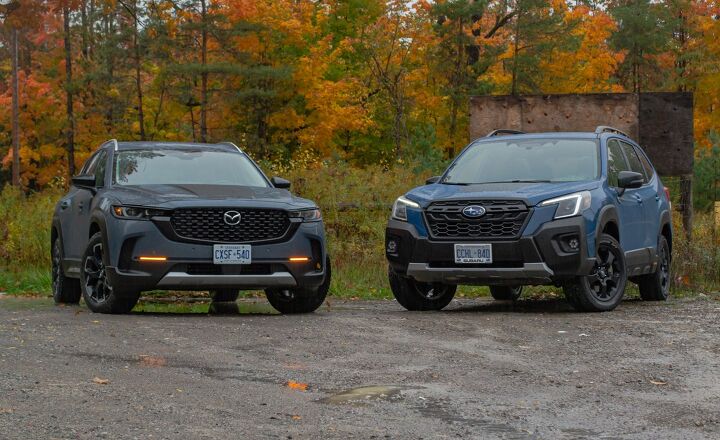































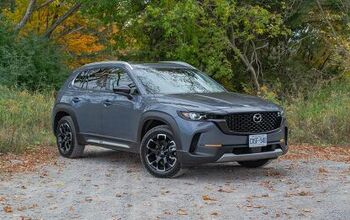
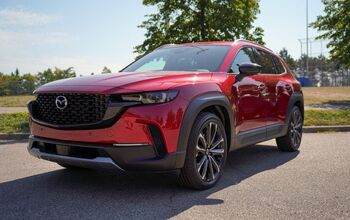

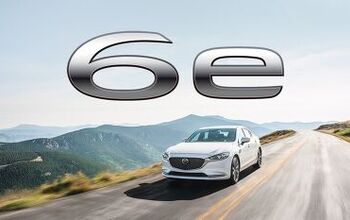
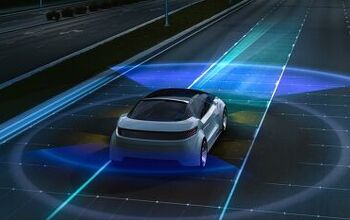

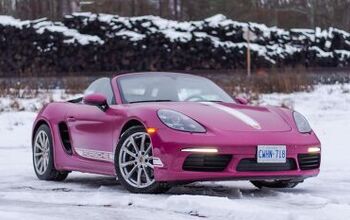



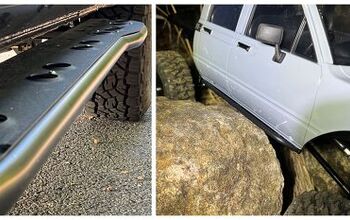
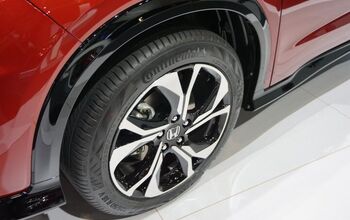

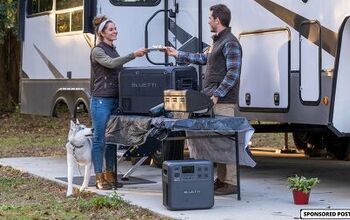

Comments
Join the conversation
How much?